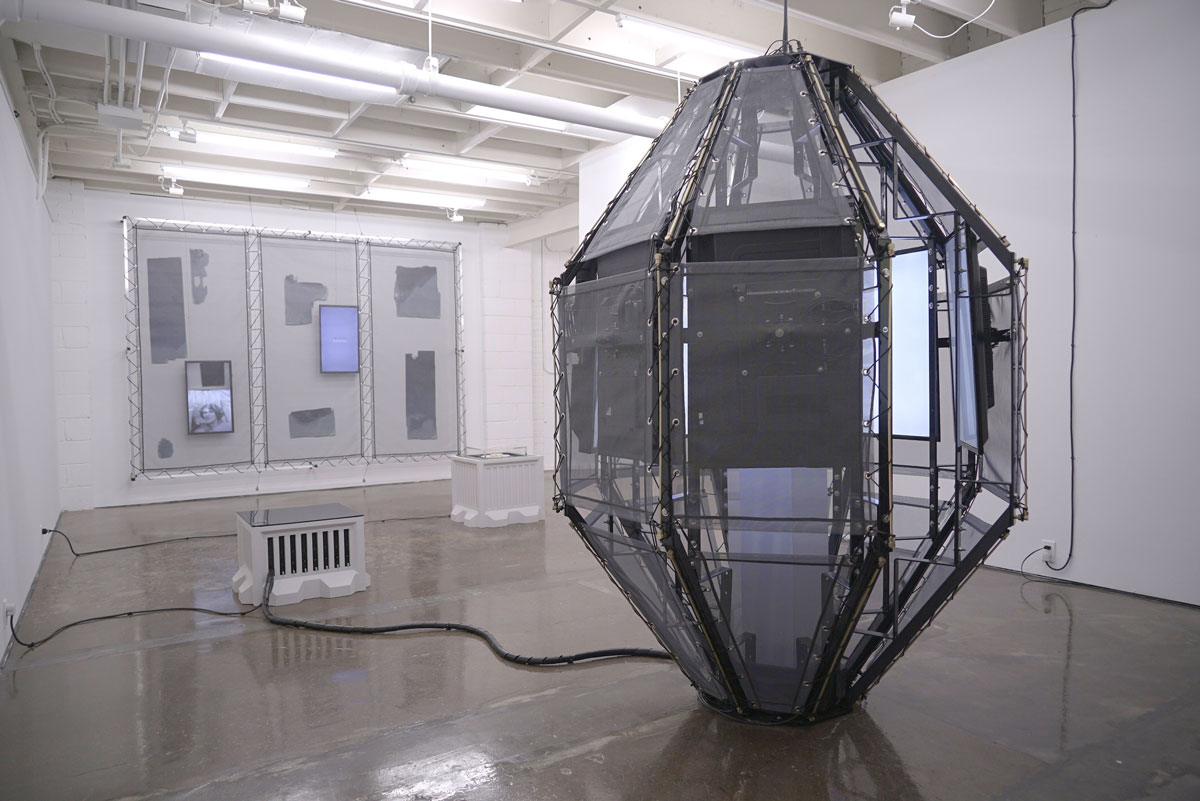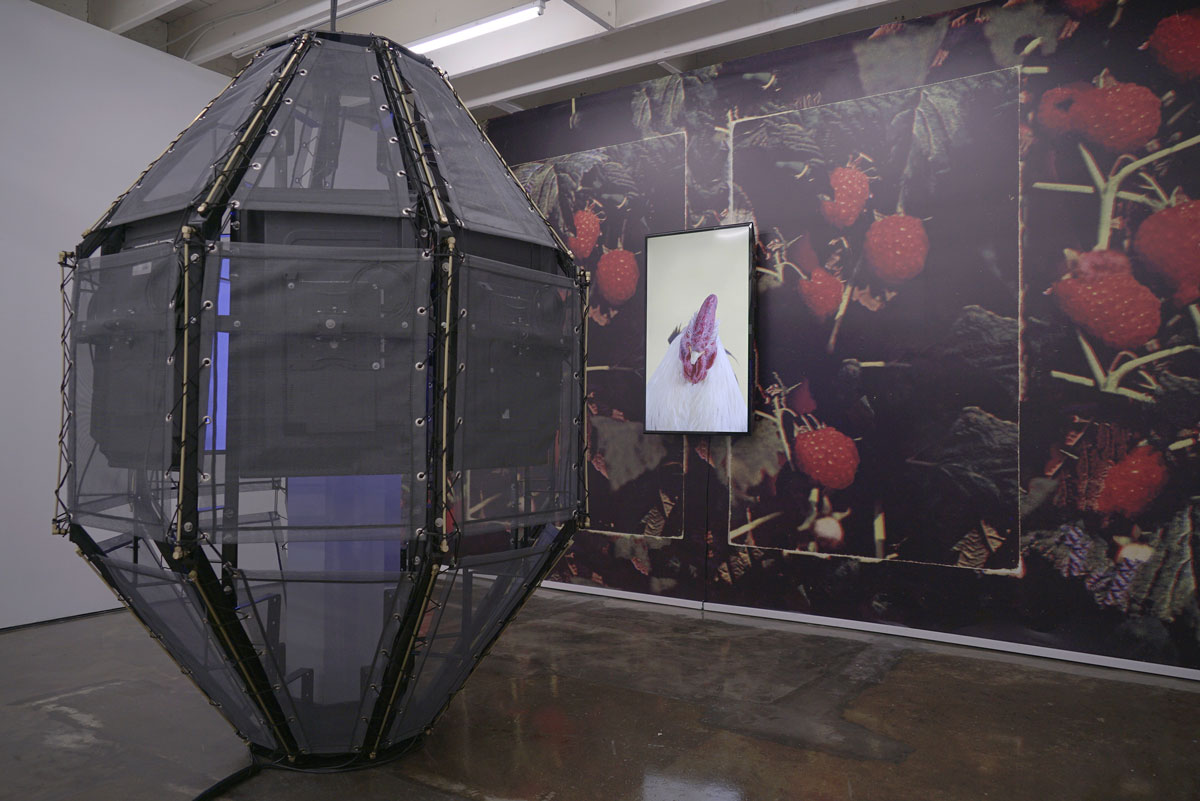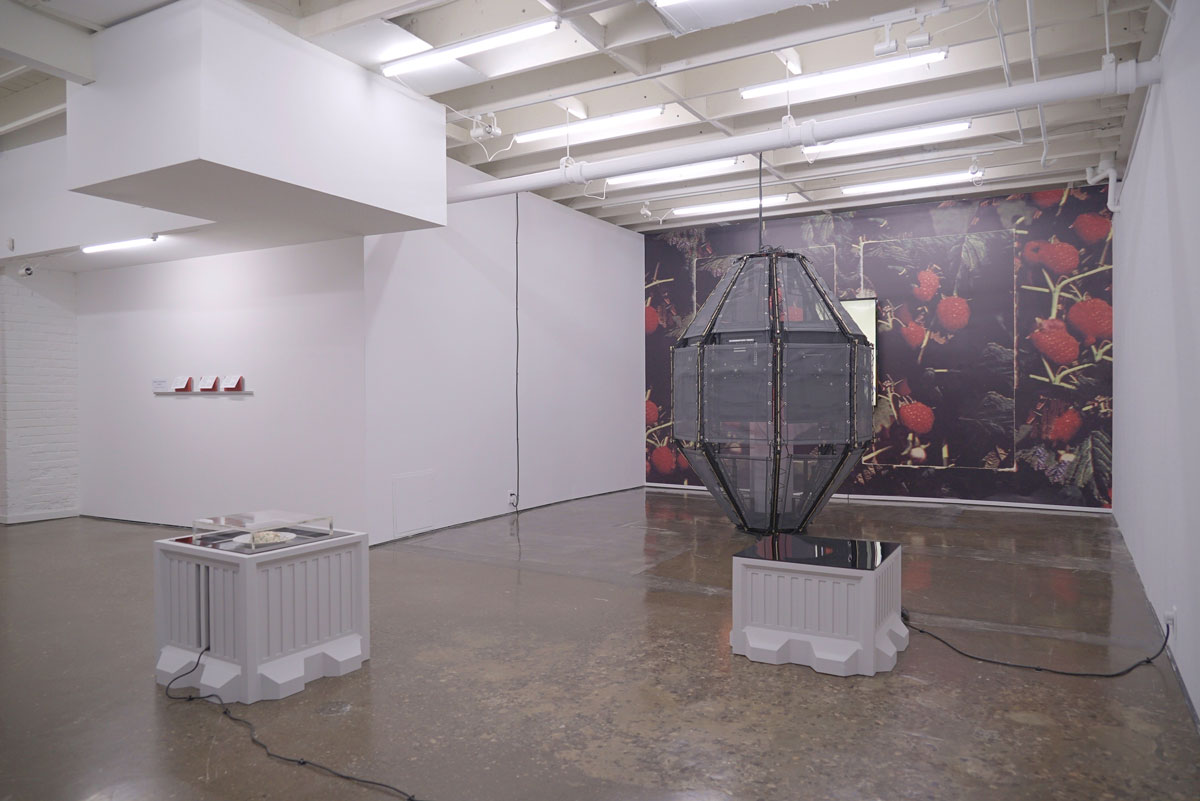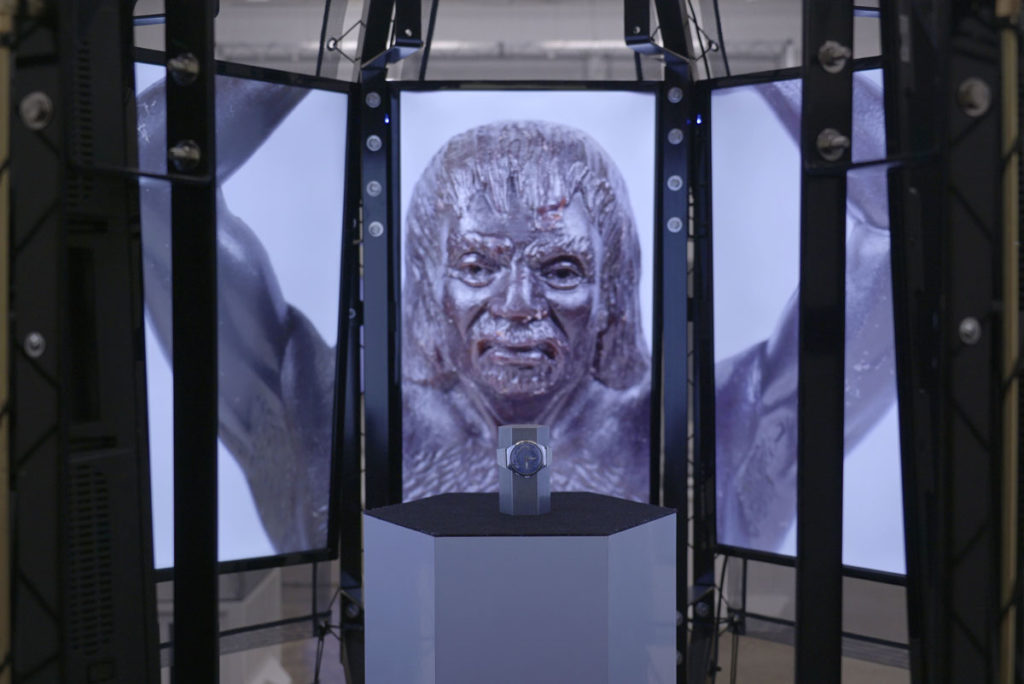Toronto artist Felix Kalmenson—born in St. Petersburg in 1987—does not shy away from targeting the manipulative and authoritative reign of Vladimir Putin in Russia. His current exhibition “Kak Vsegda/As Always,” on until March 25 at Pari Nadimi Gallery in Toronto, is a refreshingly critical show that exemplifies how contemporary art can act as poignant political dissent.
In terms of its general strategy, Kalmenson’s “Kak Vsegda/As Always” implores the viewer to recognize how governing bodies erase, manipulate and otherwise re-write history to their benefit. The artwork here critiques the veracity of images, memory and facts during past and present eras.
At the same time, Kalmenson’s exhibition is aimed towards those who are tired of “one-liner” art; the exhibition demands longer consideration if viewers are to appreciate the research that resulted from the artist’s recent month-long residency at the National Centre for Contemporary Arts in St. Petersburg.
That recent residency marked the first time Kalmenson had returned to his Russian birthplace in 27 years. And the title of the show, “Kak Vsegda/As Always,” refers to the disappointed lamentation many Russians utter as various political and social conditions remain essentially unchanged.
Through collections of St. Petersburg flea-market items and extensive study into Russian political history, Kalmenson provides apt, if not subtle, symbols for Soviet and Post-Soviet unsettling and quasi-dictorial efforts to subjugate people and history.
Walking into the exhibition, one immediately sees a structure that highlights Putin’s ascent to power and his control over the temporality of Russian culture. A large, metal egg–shaped form bears multiple screens that display a slowly revolving plastic statue of caveman in a loincloth with a boulder hoisted above his head—a figure, purchased at the St. Petersburg flea market, that gestures towards the backward-looking and toxic masculinity of Putin’s nationalistic and jingoistic vision. These screens encircle a stopped Soviet watch positioned on an eye-level platform; the watch has years marked around the edge, starting at 1980 and ending at 2000, where the watch hand has halted—Y2K being the year that Putin consolidated power, highlighting the transformation between the previous Soviet era and Russia’s current one.
 Some structures in Felix Kalmenson’s Kak Vsegda/As Always (2017) evoke scaffolding around the cupolas of Russian Orthodox churches under reconstruction. Image courtesy Pari Nadimi Gallery.
Some structures in Felix Kalmenson’s Kak Vsegda/As Always (2017) evoke scaffolding around the cupolas of Russian Orthodox churches under reconstruction. Image courtesy Pari Nadimi Gallery.
The large metal structure containing the watch and video screens is similar in shape to the scaffolding structures now built around the cupolas and onion domes of many Russian Orthodox churches currently under restoration and renovation in the country. In recent years, Putin has tried to consolidate Russian identity around that church’s Patriarch Kirill, and vice versa—in a 2012 talk, Kirill called the Putin era “a miracle of God.” Certainly, to many believers, this may seem so; in the Soviet era, after all, religion was banned and many churches were either neglected or transformed into various propagandistic museums. But as theological symbols are refurbished to Putin’s ends (remember, also in 2012, Pussy Riot performed in a Moscow cathedral, encouraging the Virgin Mary to “chase Putin out”) they can similarly be refurbished to encourage Russian imperialist, expansionist and colonialist agendas. Kalmenson suggests that both Putin’s monotheism and the Soviets’ atheism have been constructed to consolidate power and erase political, social and ethnic difference. Both have remade the past while encouraging the solidification of political hierarchy.
Smaller-scale details in this work also speak volumes about the current state of power in Russia. The plastic caveman figure featured in the video has been nicknamed Atlas by Kalmenson, with the figure’s raised arms evoking those of the sky-bearing Greek god. But Kalmenson’s Atlas seems on the brink of hurling a boulder towards a foe. The figure calls to mind Putin’s hyper-masculine self-image—as seen in the many photos of him bare-chested and riding horseback, a motif which has been proudly adopted (and mocked) by many in Russia. And with the male body in an attacking position, Atlas also references the patriarchal attitude that the Russian government has both allowed and encouraged—most recently by decriminalizing some forms of domestic violence.
The Soviet watch Kalmenson has placed in his installation might also remind some viewers of a controversy concerning Kirill. A few years ago, Kirill was accused of wearing a Swiss Breguet watch worth more than $30,000. Kirill said that he owned a Breguet, among other gifts, but that he had never worn it. Thus ensued a scandal around images of Kirill wearing watches; in some images, he said, a watch had been collaged into the scene, while in others, journalists noted that a watch had been Photoshopped out.
 Felix Kalmenson uses image manipulation and twinning to point towards twinned histories of oppression in Russia and Soviet eras in Kak Vsegda/As Always(2017). Image courtesy Pari Nadimi Gallery.
Felix Kalmenson uses image manipulation and twinning to point towards twinned histories of oppression in Russia and Soviet eras in Kak Vsegda/As Always(2017). Image courtesy Pari Nadimi Gallery.
The tendency of both Soviet and Putin-era leaders to erase, manipulate and control historical records is also underlined by two large vinyl photographs at the back of the gallery. At first, these images of washed-out raspberry bushes may seem like giant floral décor. But one photo is taken from Soviet propaganda postcards that Kalmenson also found in St. Petersburg flea markets, while the other was generated via a Photoshop algorithm called Content-Aware. Content-Aware tools create “new” imagery based on existing imagery so that, looking more closely at the vinyl prints, it is difficult to tell which one of the berry branches is perfectly false.
Kalmenson here references Russia and the Soviet Union’s twin histories of falsification—of hiring government officials who wipe people, names, events and information out from historical record at will. As David King notes in his 2014 book The Commissar Vanishes: The Falsification of Photographs and Art in Stalin’s Russia, Stalin had officials airbrushing blemishes off his face, just as he would also dictate history through constantly changing records and photographs to fit his political narrative. Of course, it was not just blemishes and photographs that were erased by Stalin, but individual people deemed enemies of the state—a phenomenon that haunts the unexplained disappearances and deaths of Russian-opposition journalists and officials today.
In short, Kalmenson’s subtle gesture with the berry-bush imagery opens the door to pertinent questions regarding the state’s power over people, as well as how reality is constructed. The Soviet postcards the artist sources attempt an ideal of propagandistic utopia, an ideal Stalin and others failed to manifest. Meanwhile, Kalmenson’s deceptive simulacrum of that utopian imagery parallels the ability of different governments to rewrite narratives into “truth” and control the (re)creation of facts.
 Miniature “monuments” based on Russian construction barriers occasionally serve up Olivier salad in Felix Kalmenson’s Kak Vsegda/As Always (2017). Image courtesy Pari Nadimi Gallery.
Miniature “monuments” based on Russian construction barriers occasionally serve up Olivier salad in Felix Kalmenson’s Kak Vsegda/As Always (2017). Image courtesy Pari Nadimi Gallery.
National identity and its reshaping is addressed in other ways in “Kak Vsegda/As Always,” too. Scattered on the exhibition’s floor are small-scale Brutalist “monuments” based on the many construction-zone (or reconstruction-zone?) barriers found in Russia. During the exhibition, an Olivier salad periodically sits in a temperature-controlled box on one of the “monuments.” This salad, invented by its namesake chef at the Hermitage in the 1860s, initially became an elitist staple, with a closely guarded recipe suspected to include “grouse, veal tongue, caviar, lettuce, crayfish tails, capers, and smoked duck.” After the Russian Revolution, the popularization of the dish led to cheaper and more easily available foods being substituted, such as potatoes, carrots, pickles and chicken. The contemporary version—a continuing staple of holiday dinners in the region—bears little resemblance, beyond its name, to the upper-class original.
Another set of video screens in the exhibition document Kalmenson’s journey to find records of his family’s history in a Russian museum. The 50-minute, two-channel video is powerful work, demonstrating the personal implications of erasing histories. Armed with a copy of his grandmother’s portrait, the artist questions various museum docents about whether they’ve seen her image in the museum. Yet as this inquisition is based on family stories and lore, Kalmenson’s uncertainty about whether his grandmother’s picture was ever actually in the museum’s collection suggests the construction of personal truths, as well as state-based ones.
Taken together, the works in “Kak Vsegda/As Always” put forward a critique of current and historical Russian politics and memory. The show provides Toronto with a window into the disturbing realities faced in Russian society—ones also not uncommon here, if one considers current tensions around the Canada 150 project and our own nation’s history of suppressing narratives that do not benefit those in power.
Matthew Kyba is an independent curator and critic. He is the founder and director of Bunker 2, a new contemporary art space in Toronto and holds an MFA in Criticism and Curatorial Practice from OCAD University.

 Flea market items in Felix Kalmenson's Kak Vsegda/As Always (2017) gesture towards Putin's hypermasculine imagery and ideals, as well as notable Russian scandals. Image courtesy of Pari Nadimi Gallery.
Flea market items in Felix Kalmenson's Kak Vsegda/As Always (2017) gesture towards Putin's hypermasculine imagery and ideals, as well as notable Russian scandals. Image courtesy of Pari Nadimi Gallery.







